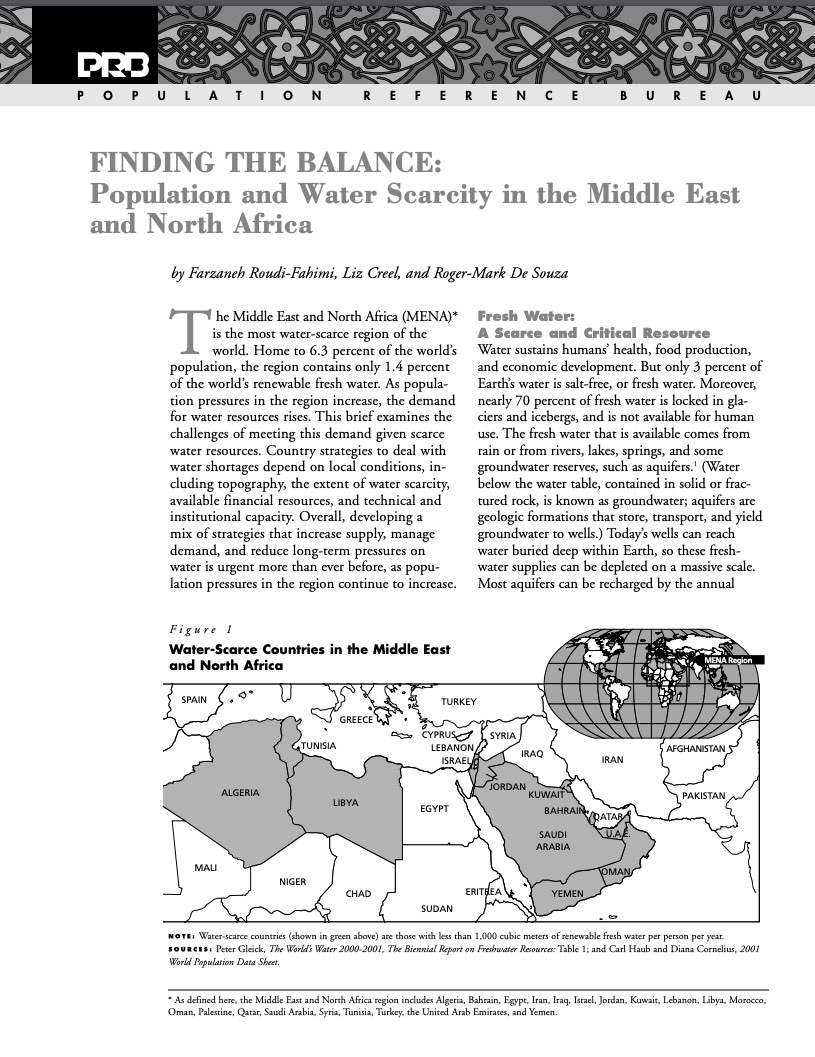Background to the HIV/AIDS Epidemic in Sub-Saharan Africa
(2002) The HIV/AIDS epidemic is a crisis of enormous proportions that is rapidly wiping out many of the gains sub-Saharan Africa has achieved since the countries attained independence.
(2002) The HIV/AIDS epidemic is a crisis of enormous proportions that is rapidly wiping out many of the gains sub-Saharan Africa has achieved since the countries attained independence.
The introduction of water filtration and chlorination in major U.S. cities between 1900 and 1940 accounted for about one-half of the 30 percent decline in urban death rates during those years, according to research published in the February 2005 issue of the journal Demography.

(2002) The Middle East and North Africa (MENA)* is the most water-scarce region of the world. Home to 6.3 percent of the world's population, the region contains only 1.4 percent of the world's renewable fresh water.

With support from the William and Flora Hewlett Foundation, PRB collaborates with African partners to generate local knowledge, build tools, and foster policy dialogue that position unpaid care work as a structural policy issue, anchored in national data, priorities, and realities.

Project: Demography and Economics of Aging and Alzheimer’s Disease
Older Black adults are less likely than their white peers to have private insurance and more likely to rely on Medicaid or Medicare as their only health insurance.
(2009) De par le monde, les jeunes – surtout les jeunes femmes – connaissent un fort taux de VIH et de grossesse non désirée à cause de leurs connaissances limitées concernant la santé sexuelle et reproductive.
At the fractious Constitutional Convention in Philadelphia in 1787, America's founders conceived the idea of a national census to determine the number of representatives each state would send to Congress.

Project: PACE: Policy, Advocacy, and Communication Enhanced for Population and Reproductive Health
Le Sénégal s’Engage: la Religion et la Santé familiale (Senegal Engage: Religion and Family Health) is a new ENGAGE presentation that serves as an advocacy tool to connect reproductive health and family planning issues with faith-based attitudes and beliefs.
The Population Reference Bureau's 2010 World Population Data Sheet focuses on a rapidly aging world, highlighting many countries' pressures to care for their elderly citizens.
(2010) Tanzania is one of the world's poorest countries, with a 2008 annual per capita income of just $1,263, and nearly 90 percent of the population living on less than $1.25 per day.1 Maternal, infant, and childhood mortality—important indicators of overall socioeconomic conditions—are high, even for East Africa.